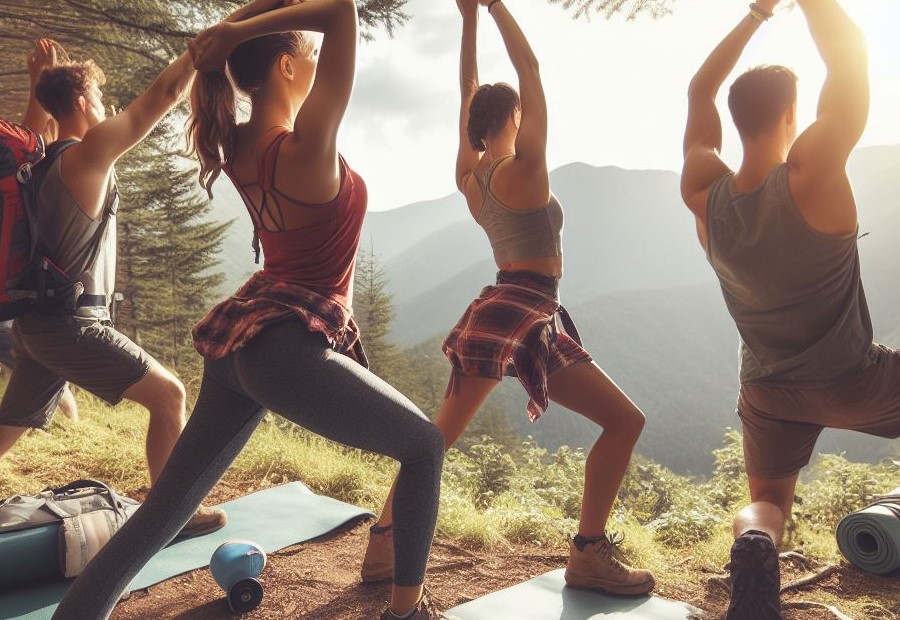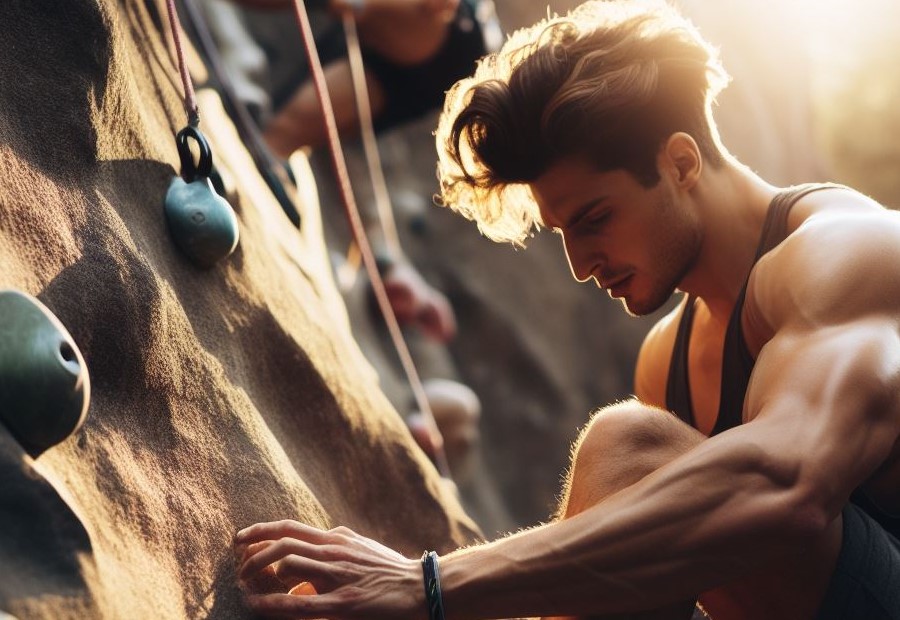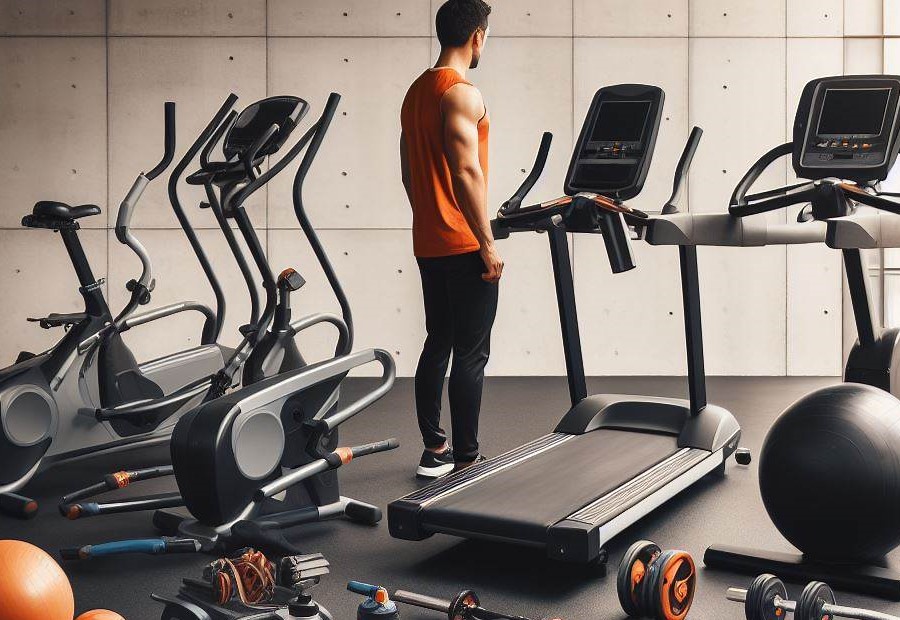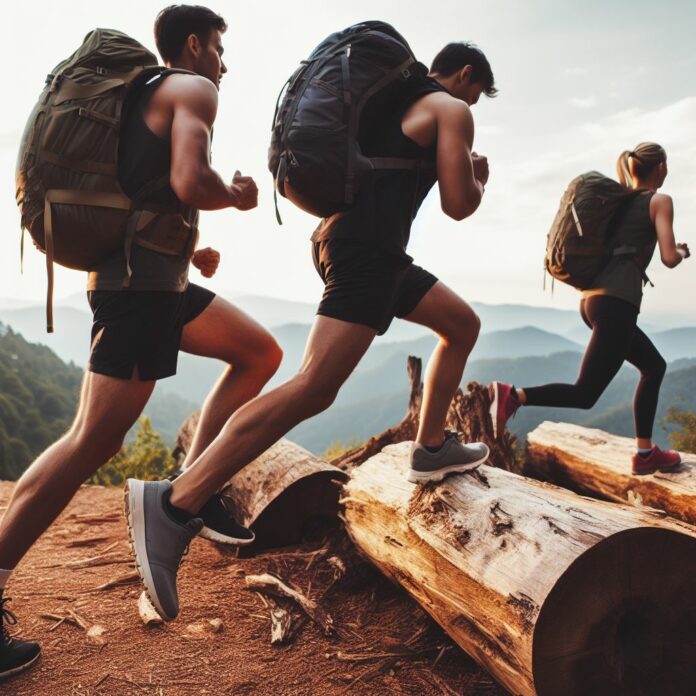Physical preparation is vital for outdoor adventures as it helps ensure a safe and enjoyable experience. Whether you’re hiking, backpacking, rock climbing, or engaging in activities like cycling, kayaking, or rafting, proper physical conditioning is essential.
Assessing your fitness level and understanding the physical demands of your adventure is the first step in designing an effective training routine. This routine should incorporate exercises that build strength, endurance, flexibility, and mobility.
Developing proper technique and form is crucial for preventing injuries. learning about the specific physical demands of your chosen activity will help tailor your training program accordingly.
Lastly, knowing how to prevent common outdoor adventure injuries and how to manage them during your expedition is critical for a successful and safe adventure. By following these guidelines, you can prepare physically for an outdoor adventure experience.
Why is Physical Preparation Important for Outdoor Adventures?

Physical preparation is crucial for outdoor adventures because it enhances performance, reduces the risk of injury, and increases overall enjoyment. Engaging in regular physical activity builds strength, endurance, and flexibility, enabling individuals to tackle the challenges that outdoor activities present.
It also prepares the body for the physical demands of hiking, climbing, or participating in other outdoor sports. Maintaining a fit and healthy body promotes better balance and coordination, reducing the chances of accidents or falls.
Additionally, physical preparation helps acclimate the body to different weather conditions, elevations, and terrains, ensuring a more comfortable and successful outdoor experience. Remember to start preparing well in advance and gradually increase the intensity of your workouts to avoid overexertion.
Incorporate a mix of cardiovascular exercises, strength training, and flexibility exercises to develop a well-rounded fitness level. By prioritizing physical preparation, you set yourself up for a safer, more enjoyable and fulfilling outdoor adventure.
So lace up your shoes, hit the gym, and get ready to conquer nature’s challenges with confidence and ease.
Assessing Your Fitness Level
Assessing your fitness level is crucial before embarking on an outdoor adventure. Here are important factors to consider:
- Cardiovascular endurance: It is important to assess your cardiovascular fitness level before engaging in any physical activity. You can measure this by trying a 1.5-mile run or a step test to see how well you can sustain physical activity over a prolonged period.
- Strength: Evaluating your strength and muscular endurance is essential. You can do this by performing exercises such as push-ups, squats, and planks. Try to complete a certain number of repetitions or hold specific positions for a designated amount of time.
- Flexibility: Assessing your flexibility is also crucial. You can attempt stretches targeting major muscle groups to determine how far you can reach or how easily you can perform specific movements.
- Balance: Testing your balance is important, especially when navigating uneven terrain. You can stand on one leg with your eyes closed or try yoga poses to evaluate your balance.
- Agility: Determining your agility is significant as well. You can run through an agility ladder or perform exercises that involve quick changes in direction and speed.
- Fact: Engaging in regular physical activity can greatly improve cardiovascular fitness, reduce the risk of chronic diseases, and enhance mental well-being.
Creating a Training Routine

To effectively create a training routine for an outdoor adventure, follow these steps:
- Create specific goals: Clearly define what you want to achieve with your training, such as improving endurance or building strength.
- Select target activities: Decide on the specific activities you will engage in during your outdoor adventure, such as hiking, rock climbing, or biking.
- Conduct research: Gather information about the physical demands of your chosen activities. Understand which muscles are utilized and what skills are required.
- Develop a comprehensive routine: Include a mix of cardiovascular exercises, strength training, flexibility exercises, and skill-specific drills.
- Create a schedule: Determine the number of training days per week and assign specific time slots for each workout.
- Gradually progress: Start with manageable intensity levels and gradually increase the difficulty and duration of your workouts.
- Track your progress: Keep a record of your workouts, noting the distances covered, weights lifted, or time taken. This will allow you to monitor your improvement.
- Maintain consistency: Stick to your training routine even when faced with challenges or a busy schedule.
- Listen to your body: Pay attention to any signs of fatigue, pain, or injury. Rest or modify your training if necessary.
- Seek guidance: If you are new to training or unsure about designing a routine, consider working with a professional trainer or coach.
Building Strength and Endurance

Building strength and endurance is vital for preparing physically for an outdoor adventure. Regular exercise is crucial in achieving this goal. Incorporate activities such as weightlifting, running, and cycling into your fitness routine.
By participating in strength training exercises, you can enhance the strength of your muscles, enabling you to comfortably carry heavy backpacks and endure challenging terrains.
Increasing your cardiovascular endurance is also essential as it allows your body to efficiently transport oxygen and nutrients during long hikes or demanding activities. Aim to engage in aerobic exercises like swimming or jogging to boost your endurance levels.
Consistency is key when it comes to building strength and endurance, so gradually intensify the intensity and duration of your workouts over time. Remember to always listen to your body and rest when necessary to prevent injuries.
By focusing on building strength and endurance, you will be well-prepared to conquer any outdoor adventure that comes your way.
What are the Best Strength-Building Exercises for Outdoor Adventures?
When it comes to preparing physically for outdoor adventures, incorporating strength-building exercises into your training routine is crucial. These exercises are essential for enhancing your overall strength, stability, and endurance, enabling you to effectively tackle the physical demands of outdoor activities.
So, what are the best strength-building exercises for outdoor adventures? Here are some to consider:
- Squats: Squats are one of the best exercises for building lower body strength. They specifically target your quads, glutes, and hamstrings.
- Deadlifts: Deadlifts are a compound exercise that works multiple muscle groups including your legs, back, and core.
- Push-ups: Push-ups are a classic exercise that engages your chest, shoulders, and triceps. They are excellent for building upper body strength.
- Pull-ups: Pull-ups are great for working your back, biceps, and upper body muscles. They help develop strong pulling strength.
- Planks: Planks are a core exercise that strengthens your abs, back, and stabilizing muscles. They improve overall stability and posture.
- Lunges: Lunges target your leg muscles and enhance stability, which is important for activities like hiking and climbing.
- Step-ups: Step-ups simulate climbing movements and engage your leg muscles. They improve lower body strength and balance.
Remember, it’s important to personalize your training routine based on your fitness level, goals, and the specific physical demands of your chosen outdoor adventure. To ensure you are using proper form and technique while performing these exercises, consult with a fitness professional.
Additionally, regularly track your progress and gradually increase the intensity and duration of your workouts to continue challenging your muscles and improving your strength.
By incorporating these strength-building exercises into your training routine, you’ll be better equipped to tackle the physical challenges of outdoor adventures and enjoy your experiences to the fullest.
What are some Effective Endurance-Building Activities?
When preparing for an outdoor adventure, it’s important to include effective endurance-building activities in your training routine. These activities will help improve your stamina, allowing you to endure longer periods of physical exertion. Here are some examples:
- Running: Incorporating regular running sessions into your training routine is an excellent way to build endurance. Start with shorter distances and gradually increase the duration and intensity of your runs.
- Cycling: Cycling is a low-impact activity that targets your cardiovascular system and helps build leg muscles. Aim to include both indoor cycling sessions and outdoor rides in your training plan.
- Swimming: Swimming is a full-body workout that improves cardiovascular fitness and builds endurance. It is also gentle on the joints, making it a great option for individuals with joint issues.
- Hiking: Hiking on varying terrains and elevations challenges your cardiovascular system and leg muscles. Incorporate longer hikes into your training routine to build both endurance and strength.
- Interval Training: High-intensity interval training (HIIT) sessions are effective for building endurance. Alternate between short bursts of intense activity and periods of rest or lower-intensity exercise.
Remember to consult with a healthcare professional or a trainer before starting any new exercise routine, especially if you have any underlying health conditions.
Improving Flexibility and Mobility

To improve flexibility and mobility for your outdoor adventure, consider incorporating the following practices:
- Stretching: Engage in a regular stretching routine to improve flexibility and range of motion. Focus on major muscle groups such as the legs, hips, back, and shoulders.
- Yoga or Pilates: These practices can help enhance core strength, balance, and flexibility. Participating in regular classes or using online resources can be beneficial.
- Foam Rolling: Using a foam roller can release tension in muscles and enhance flexibility. Roll out major muscle groups before and after physical activity.
- Dynamic Warm-up: Before any outdoor activity, incorporate dynamic movements such as walking lunges, arm circles, and leg swings to warm up the muscles and increase mobility.
- Strength Training: Include exercises that target major muscle groups to improve overall strength and stability. Strong muscles can improve mobility and provide better support during outdoor activities.
- Balance Exercises: Incorporate exercises that challenge your balance, such as single-leg stands or using a balance board. Improving balance can help prevent injuries during uneven terrain or challenging outdoor conditions.
- Regular Movement: Stay active throughout the day, whether it’s going for walks, taking the stairs, or engaging in activities that require movement. Consistent movement helps maintain flexibility and mobility.
What Are Some Stretching and Mobility Exercises to Incorporate?
When preparing for an outdoor adventure, it is important to incorporate stretching and mobility exercises into your training routine. These exercises help improve flexibility, range of motion, and prevent injuries.
Here are some stretching and mobility exercises to include:
- Leg swings: Stand next to a wall or support and swing one leg forward and backward, then sideways. Repeat on the other leg.
- Hip circles: Stand with your feet shoulder-width apart and make circles with your hips, clockwise and counterclockwise.
- Shoulder rolls: Stand with your feet shoulder-width apart and roll your shoulders forward and backward.
- Neck rotations: Gently rotate your neck in a circular motion, clockwise and counterclockwise.
- Child’s pose: Start on your hands and knees, then sit back on your heels, stretching your arms forward and resting your forehead on the ground.
- Standing quadriceps stretch: Stand upright and bring one foot back, lifting your heel towards your glutes. Hold onto a support if needed.
- Hamstring stretch: Sit on the ground with one leg extended in front of you and the other bent. Lean forward, reaching towards your toes.
Remember to perform each stretch slowly and hold for 15-30 seconds. Incorporating these stretching and mobility exercises into your training routine will help prepare your body for the physical demands of your outdoor adventure and reduce the risk of injuries.
Make sure to consult with a fitness professional or trainer for personalized guidance and proper form.
Developing Proper Technique and Form

To develop proper technique and form, familiarize yourself with the specific technique required for your outdoor adventure. Practice the correct movements and positions to enhance your performance.
Pay attention to your posture. Keep your back straight and shoulders relaxed to minimize strain and prevent injuries while developing proper technique and form.
Cultivate a strong core. Engage your abdominal muscles to provide stability and power during your outdoor activities, aiding in the development of proper technique and form.
Maintain proper alignment. Align your body in a balanced and coordinated manner to optimize efficiency and reduce stress on joints while developing proper technique and form.
Practice proper breathing techniques. Deep, controlled breathing helps supply oxygen to your muscles and increases endurance while developing proper technique and form.
By following these steps, you can develop proper technique and form, which will enhance your performance and reduce the risk of injuries during your outdoor adventure.
Training for Specific Outdoor Activities

What are the Physical Demands of Hiking and Backpacking?
Hiking and backpacking require physical endurance and strength to navigate rugged terrains and carry heavy backpacks. The physical demands of hiking and backpacking can vary depending on factors such as the trail difficulty, elevation gain, distance, and weight of the backpack.
- Hiking and backpacking involve constant walking and climbing, which challenge your cardiovascular fitness. Uphill climbs and steep descents require greater effort and endurance.
- Carrying a backpack adds an additional physical demand. The weight of the backpack can vary greatly, but it typically includes essentials such as water, food, clothing, and camping gear. It is crucial to have strong leg and core muscles to support the weight and maintain balance.
- Trail conditions can also impact the physical demands. Uneven terrain, rocky surfaces, and unstable footing require stability and agility. Your muscles, especially in the legs, need to be prepared for these challenges.
- Endurance is essential for long hikes or multi-day backpacking trips. Stamina is necessary to sustain physical activity for extended periods without excessive fatigue.
- Additionally, hiking and backpacking can sometimes involve altitude changes, which can increase the difficulty level due to reduced oxygen levels. This requires adaptability and proper acclimatization.
Regular cardiovascular exercise, strength training for the lower body and core, and practicing hiking with a loaded backpack are all effective ways to prepare for the physical demands of hiking and backpacking.
What are the Physical Demands of Rock Climbing?
Rock climbing is physically demanding and requires a combination of strength, endurance, balance, and flexibility. It challenges both the upper and lower body, as well as the mind. Here are the physical demands of rock climbing:
1. Upper body strength: Rock climbing relies heavily on the strength of the arms, shoulders, and back. Climbers need to have strong muscles to pull themselves up and maintain their grip on the wall or rock face.
2. Finger and hand strength: The fingers and hands play a crucial role in rock climbing, as climbers need to grip small holds and cracks. Building finger and hand strength is essential for maintaining a secure grip.
3. Core strength: A strong core is necessary for stability and balance while climbing. It helps climbers maintain control over their body movements and stay in balance on the wall.
4. Endurance: Rock climbing requires muscular and cardiovascular endurance. Climbers often spend extended periods on the wall or rock face, necessitating the ability to sustain physical exertion for a prolonged period.
5. Flexibility: Flexibility is essential for rock climbing, as it allows climbers to reach for holds and move their bodies efficiently. Stretching exercises targeting the shoulders, hips, and legs can help improve flexibility.
6. Balance and coordination: Rock climbing involves maintaining balance and coordinating movements between different parts of the body. Developing balance and coordination skills can greatly enhance performance on the wall.
7. Mental focus and problem-solving: In addition to physical demands, rock climbing requires mental focus and problem-solving skills. Climbers must analyze routes, make quick decisions, and adapt to changing conditions.
Incorporating exercises that target these physical demands can help prepare individuals for the challenges of rock climbing and improve their overall climbing performance.
What are the Physical Demands of Cycling?
The physical demands of cycling vary depending on factors such as terrain, intensity, and duration. Here are some key aspects to consider:
- Cardiovascular endurance: Cycling requires sustained cardiovascular effort to keep up with the pace and intensity of the activity. It helps improve heart health and overall stamina.
- Muscular strength and endurance: Cycling primarily targets the muscles in the lower body, including the quadriceps, hamstrings, glutes, and calves. These muscles need to work continuously to generate power and maintain speed.
- Balance and coordination: Maintaining balance on a bike and coordinating pedaling, steering, and braking requires good balance and coordination skills.
- Flexibility: Proper flexibility and range of motion in the lower body are essential for efficient pedaling and preventing injuries.
- Aerobic capacity: Cycling can be an intense aerobic activity, particularly when cycling uphill or at a fast pace. It challenges the respiratory system and increases oxygen uptake.
Cycling is a popular outdoor activity enjoyed by people of all ages and fitness levels. Whether you’re a casual cyclist or a competitive racer, understanding the physical demands of cycling can help you tailor your training and preparation to meet your goals.
Keep in mind that individual fitness levels and personal goals may influence the specific demands of cycling for each person.
What are the Physical Demands of Kayaking or Rafting?
Kayaking or rafting are physically demanding outdoor activities that require strength, endurance, coordination, and agility. Paddling is a key component of kayaking or rafting, as it involves repetitive motions that utilize both the upper body and core muscles.
This activity requires strength in the arms, shoulders, and back to propel the boat through the water.
In addition to strength, maintaining balance and stability is crucial while navigating different water conditions such as rapids or waves. This requires good core stability and lower body strength to stay balanced on a kayak or raft.
Stamina is another important factor in kayaking or rafting. These activities can be physically demanding, especially when dealing with long distances or challenging rapids. Building endurance through cardiovascular exercises like jogging or cycling can greatly improve stamina for these activities.
Water reading is a crucial skill in kayaking or rafting. Understanding how to recognize currents, eddies, and obstacles to navigate safely is essential. This skill requires experience and knowledge of river dynamics.
In case of emergencies or unexpected situations, knowing swift-water rescue techniques is vital for kayakers or rafters. It is important to be able to swim confidently in fast-moving water and have knowledge of rescue strategies.
To prepare physically for kayaking or rafting, it is recommended to incorporate exercises that target upper body and core strength, such as push-ups, pull-ups, and planks, into your fitness routine.
Additionally, practicing swimming in open water can improve water confidence and safety skills. Always remember to wear a personal flotation device (PFD) and receive proper training before engaging in these activities.
How to Prevent Common Outdoor Adventure Injuries?
When engaging in outdoor adventures, it is important to take steps to prevent common injuries. Here are some ways to prevent injuries during your outdoor adventures:
- Prepare your body: Prioritize physical preparation by engaging in regular strength and endurance training exercises. This will help condition your muscles and joints to withstand the physical demands of outdoor activities.
- Warm up: Always warm up before starting any outdoor activity. Perform dynamic exercises such as jumping jacks, lunges, or arm circles to increase blood flow to your muscles and loosen up your joints.
- Use proper equipment: Ensure that you have the appropriate gear and equipment for your chosen outdoor activity. Proper footwear, helmets, and protective gear can significantly reduce the risk of injuries.
- Know your limits: Be aware of your physical capabilities and don’t push yourself beyond your limits. Gradually increase the intensity and duration of your workouts to avoid overexertion.
- Stay hydrated and fuel properly: Drink plenty of water and eat nutritious meals before and during your outdoor adventures. Proper hydration and nutrition can prevent muscle cramps and fatigue.
- Pay attention to the terrain: Be mindful of the terrain you’ll be navigating and take necessary precautions. Watch out for uneven surfaces, slippery areas, or obstacles that may cause trips or falls.
- Learn proper techniques: Take the time to learn and practice proper techniques for your specific outdoor activities. This will help minimize the risk of injuries and improve your overall performance.
- Listen to your body: Pay attention to any pain, discomfort, or signs of injury during your outdoor adventures. If you experience any symptoms, take a break, and seek medical attention if necessary.
- Be prepared for emergencies: Carry a first aid kit and know basic first aid procedures. This will enable you to promptly address minor injuries and provide immediate care until professional help is available.
By following these steps, you can reduce the chances of common outdoor adventure injuries and enjoy a safe and fulfilling experience.
How to Treat and Manage Injuries During an Outdoor Adventure?
When it comes to outdoor adventures, it’s important to know how to treat and manage injuries to ensure a safe and enjoyable experience. Here are some steps to follow:
- Assess the severity of the injury. Determine if it’s a minor injury that can be treated on the spot or if it requires immediate medical attention.
- If the injury is minor, clean the wound with clean water and soap if available. Apply an antiseptic ointment to prevent infection.
- If there is bleeding, apply pressure to the wound with a clean cloth to stop the bleeding.
- Elevate the injured body part if possible to reduce swelling.
- Apply a cold compress or ice pack to the injured area to reduce pain and swelling.
- If the injury is a sprain or strain, immobilize the affected area by using a splint or brace.
- Take over-the-counter pain relievers, such as ibuprofen or acetaminophen, to alleviate pain and reduce inflammation.
- If the injury is severe or not improving, seek medical attention immediately.
- Follow any specific instructions or treatments provided by a healthcare professional.
- Rest and allow your body time to heal before engaging in any strenuous activities.
Remember, prevention is always better than cure, so take necessary precautions and be aware of your limits during outdoor adventures to minimize the risk of injuries.
Frequently Asked Questions
How can I physically prepare for an outdoor adventure?
Physical preparation is essential for outdoor adventures to ensure your safety and enjoyment. Here are some steps to prepare:
- Invest in specific and deliberate training to build your physical readiness.
- Set goals, create a training plan, and be consistent in your training.
- Focus on building muscular strength, especially in the muscles specific to your activity.
- Don’t neglect your core muscles, as they contribute to flexibility and balance.
- Improve your aerobic efficiency through specific training that utilizes oxygen efficiently.
- Consider interval training and high-intensity interval training (HIIT) for better aerobic results.
- Invest in overall fitness to enhance your outdoor experiences and enjoyment.
What are some recommended exercises for specific outdoor activities?
Here are recommended exercises for different outdoor pursuits:
- For hiking: Focus on improving strength through the lumbo-pelvic-hip complex, perform unilateral exercises for mobility and stability, and engage in cardio exercises such as using the stepmill machine.
- For backpacking: Prioritize upper body and core strength, increase cardio exercises, include weighted frontal-plane movements, and focus on core exercises.
- For paddling: Train the core and back muscles, perform rowing exercises for endurance, and include strength exercises like pull-ups and dumbbell rows.
- For portaging: Perform cardio exercises with a weighted vest, focus on strength training with heavy carries and single-leg Romanian deadlifts, and prioritize core exercises.
How should I train to improve aerobic fitness for outdoor adventures?
To improve your aerobic fitness for outdoor adventures, follow these guidelines:
- Engage in aerobic or cardio activities such as running, biking, skating, or swimming.
- Exercise at least three times a week, with a goal of five or six times a week.
- Stretch and work out with light weights to maintain flexibility and build strength.
- Monitor your heart rate during exercise and aim to maintain it within the target heart rate (THR) range.
- Calculate your THR by subtracting your age from 170.
- Maintain your THR for a minimum of 30 minutes, three to five times a week.
- Consider following an eight-week fitness program that gradually increases in intensity.
What should I pack and how can I prepare my body for outdoor activities in the Canadian Rockies?
When preparing for outdoor activities in the Canadian Rockies, consider the following:
- Pack proper gear, including sturdy shoes, a well-fitting backpack, and creature comforts like an inflatable pillow or a thicker sleeping pad.
- Condition your body through regular exercise and stretching.
- Plan your itinerary based on your fitness level and know your limits to avoid injuries.
- Warm up properly before starting any outdoor pursuit and take breaks for stretching during the activity.
- Prioritize rest and recovery after the adventure.
- Consider utilizing resources like the Straighten Up Alberta program for stretching and improving posture.
- If experiencing pain, seek advice and treatment from a chiropractor.
What are the benefits of physically preparing for outdoor adventures?
Physically preparing for outdoor adventures offers numerous benefits, including:
- Reduced risk of injuries during outdoor activities.
- Enhanced overall health and fitness levels.
- Improved aerobic capacity and stamina.
- Positive impact on mental health and well-being.
- Boosted body image and self-confidence.
- Opportunities for bonding and rebuilding relationships with family and friends through shared experiences.
- Increased enjoyment and satisfaction during outdoor adventures.
How can I adopt healthy eating habits to support my physical preparation for outdoor adventures?
Adopting healthy eating habits is crucial for supporting your physical preparation for outdoor adventures. Here are some tips:
- Focus on consuming unrefined carbohydrates for sustained energy levels.
- Reduce consumption of fatty foods and caffeine.
- Drink plenty of water instead of sugary drinks to stay hydrated.
- Avoid tobacco or cannabis products.
- Incorporate a balanced diet with fruits, vegetables, lean proteins, and whole grains.
- Consult with a nutritionist or dietitian for personalized guidance.
- Be mindful of portion sizes and practice moderation.

